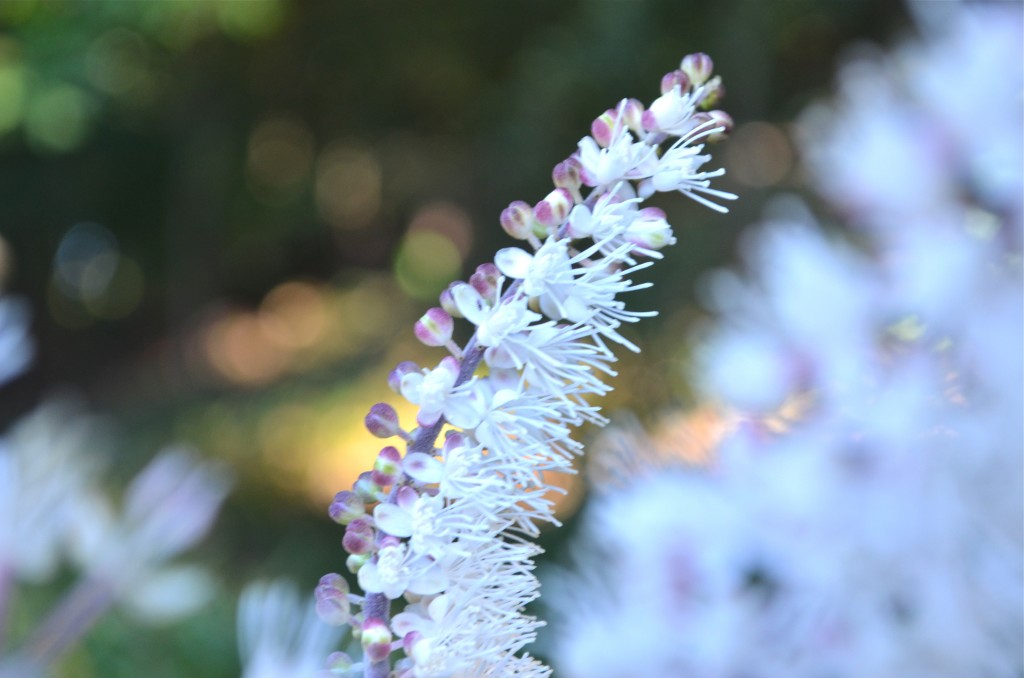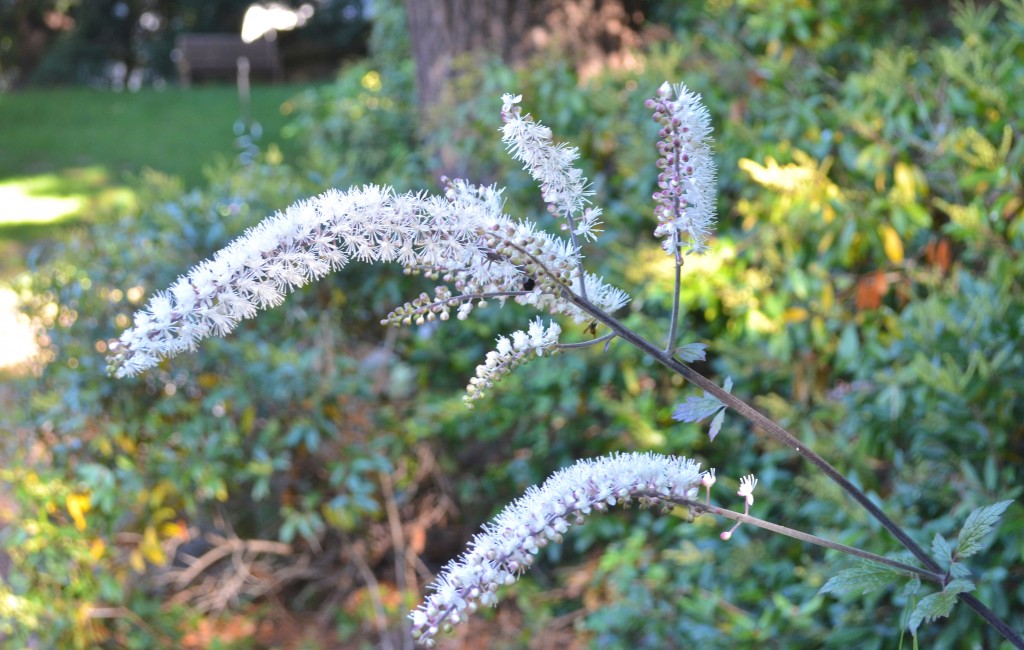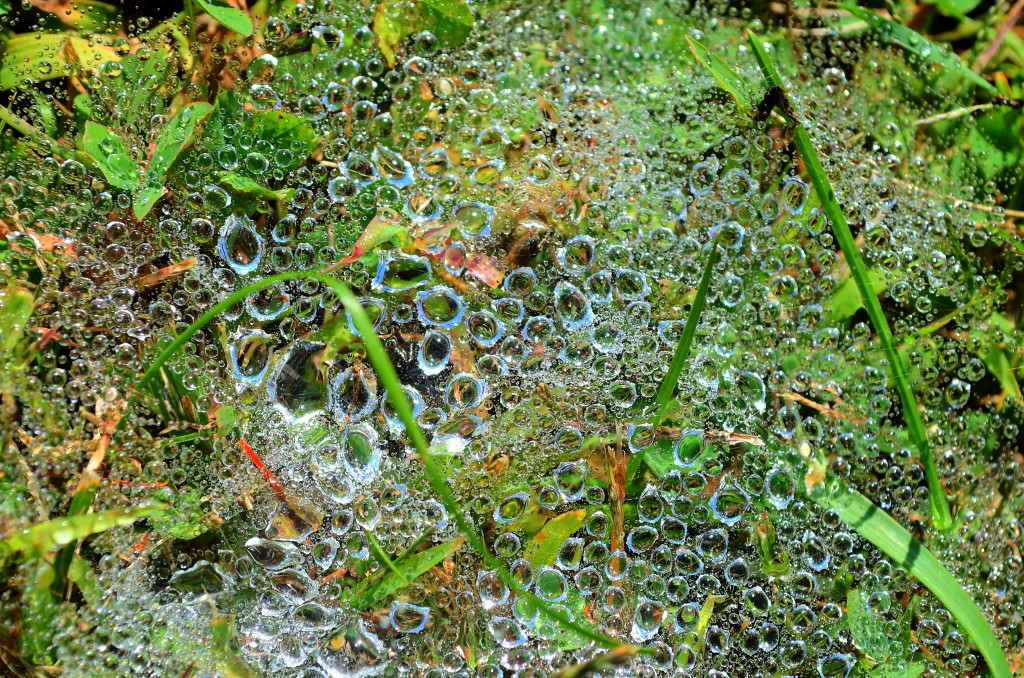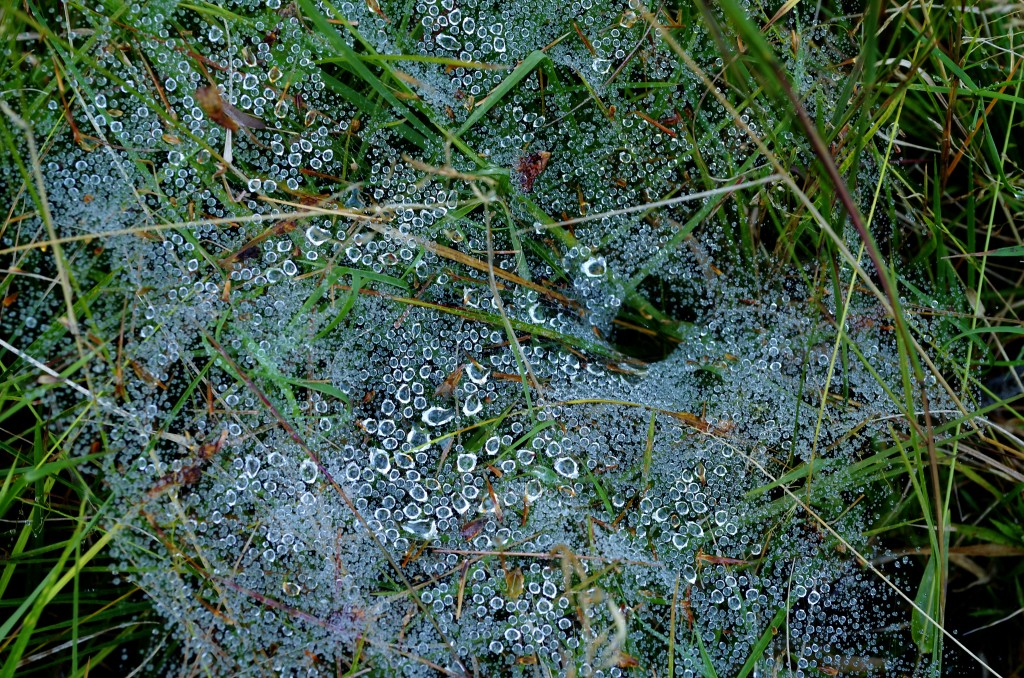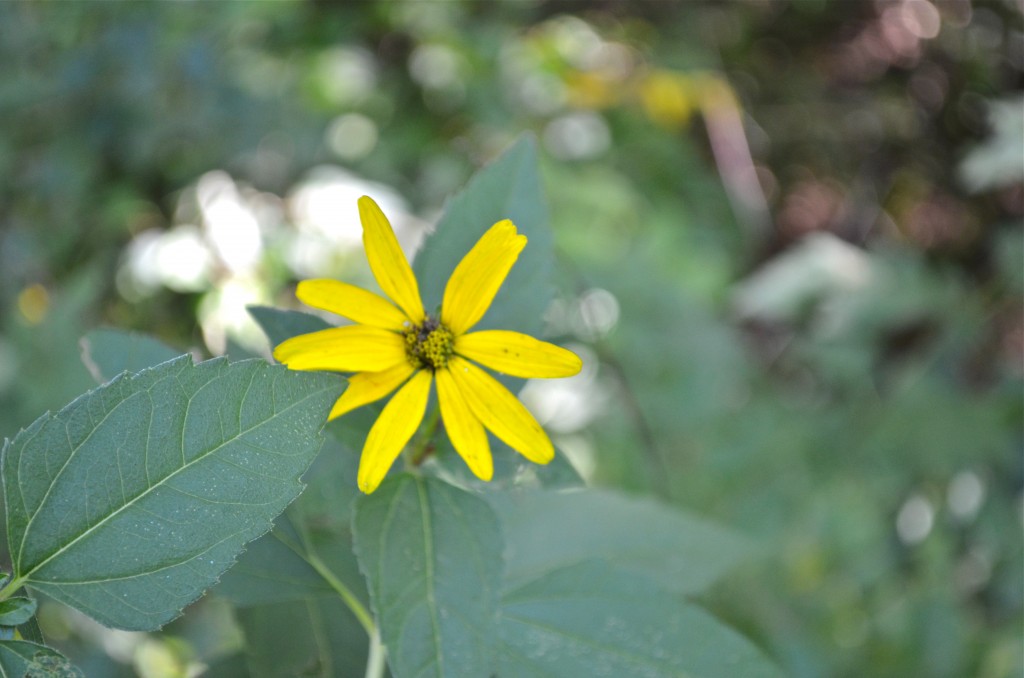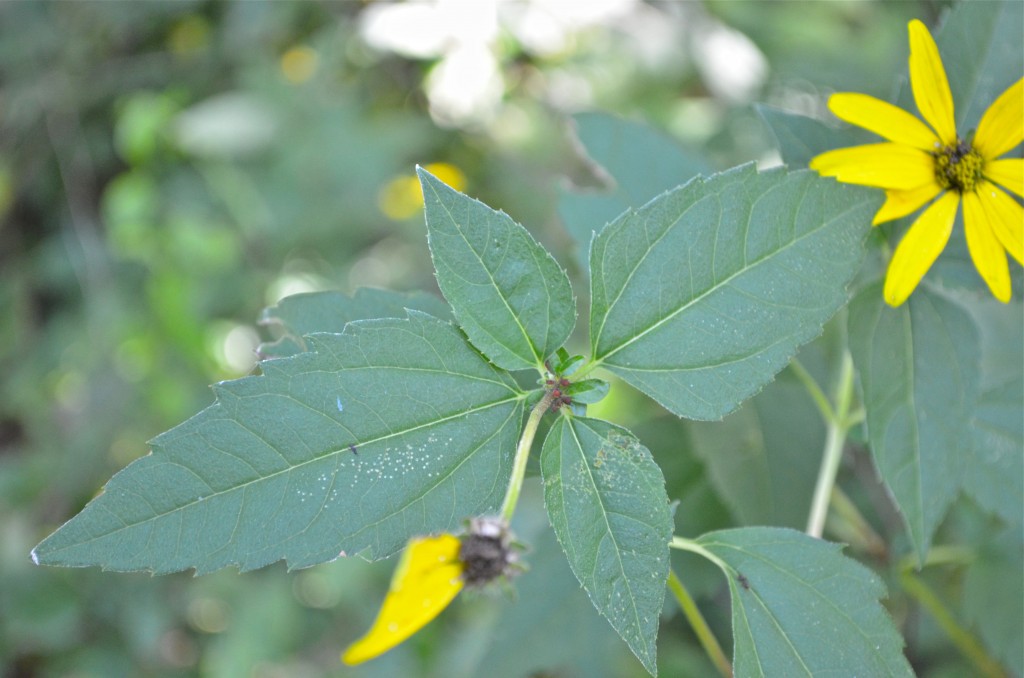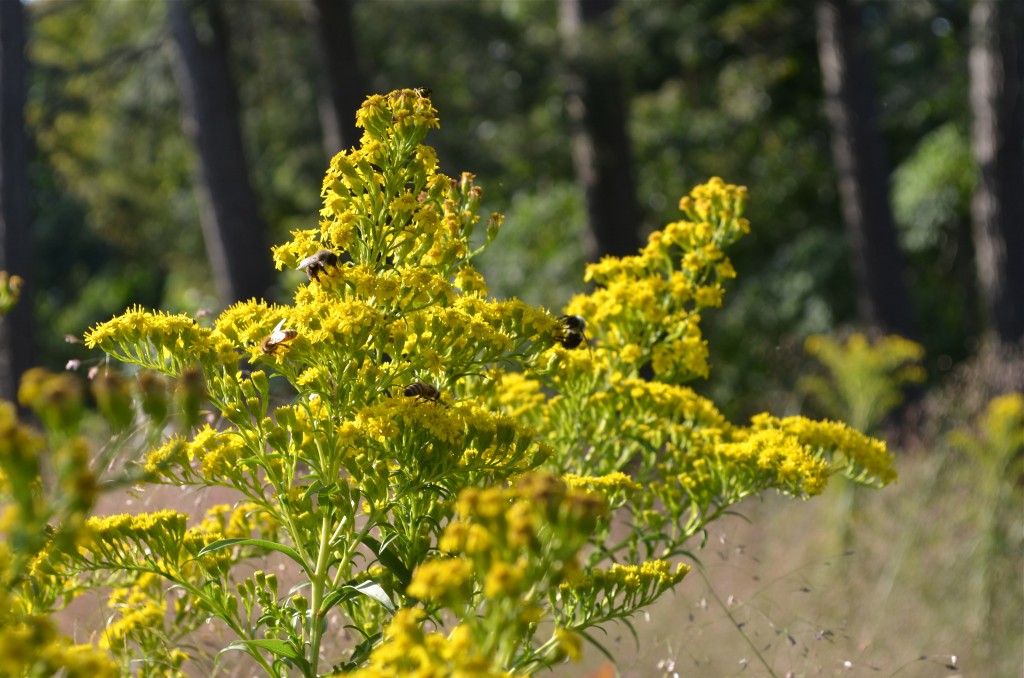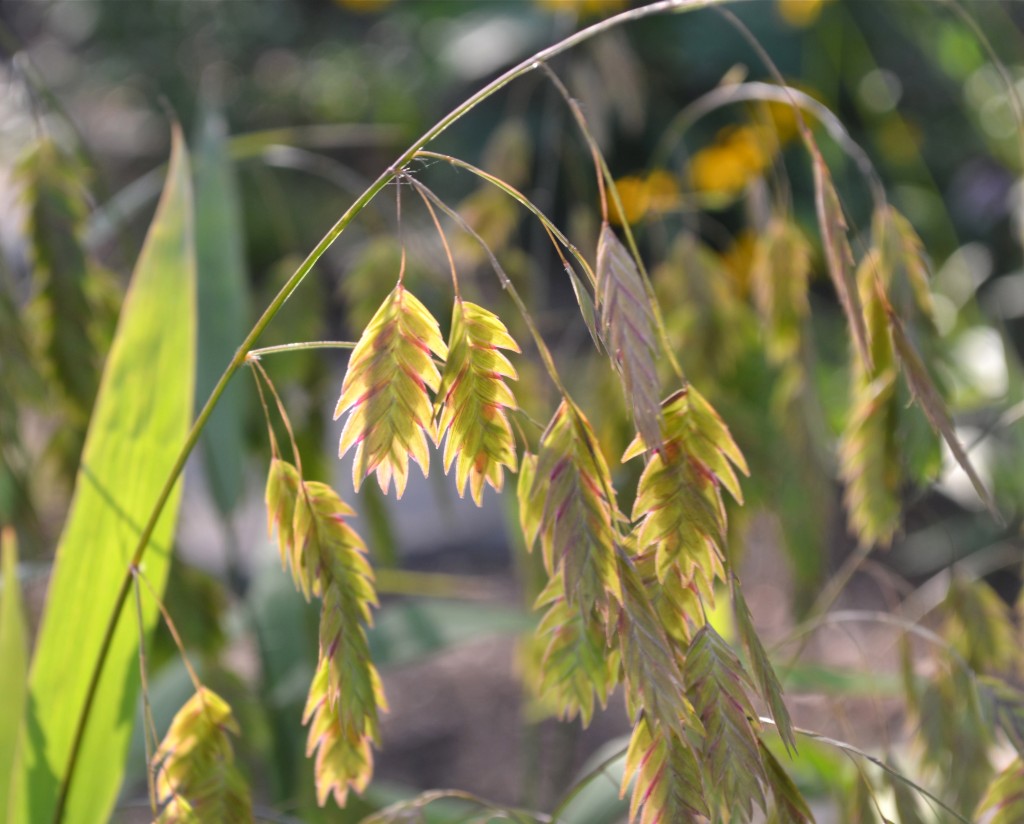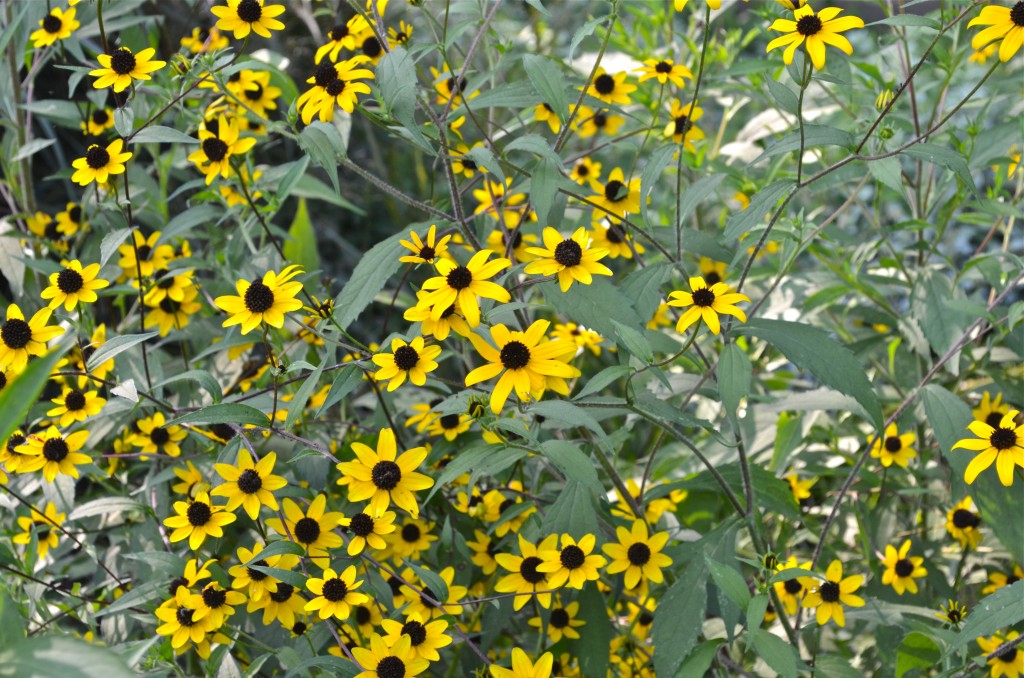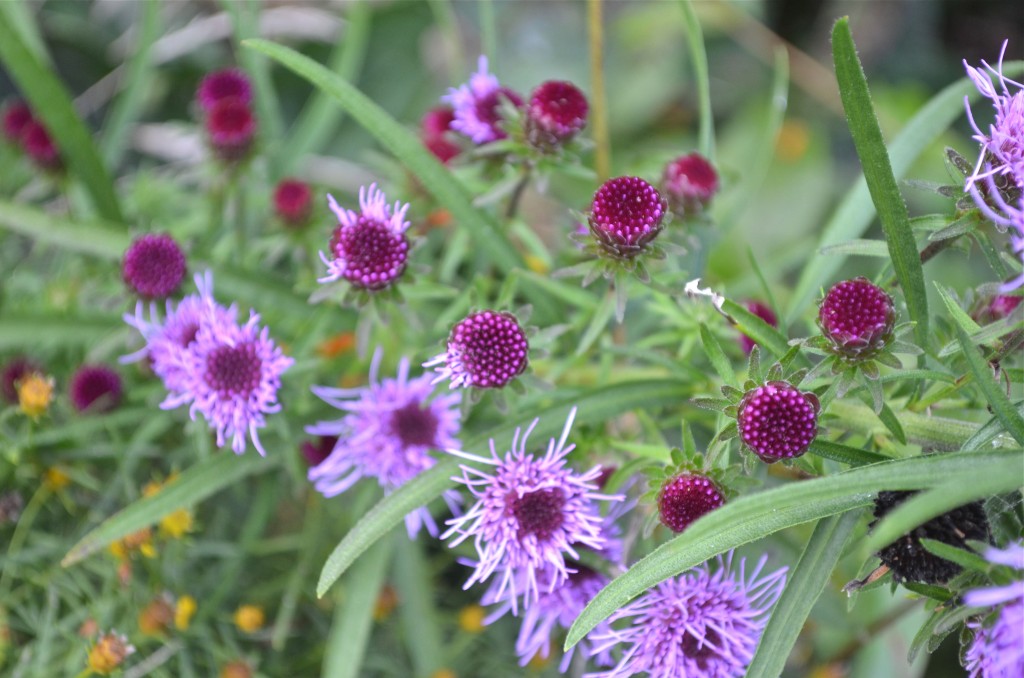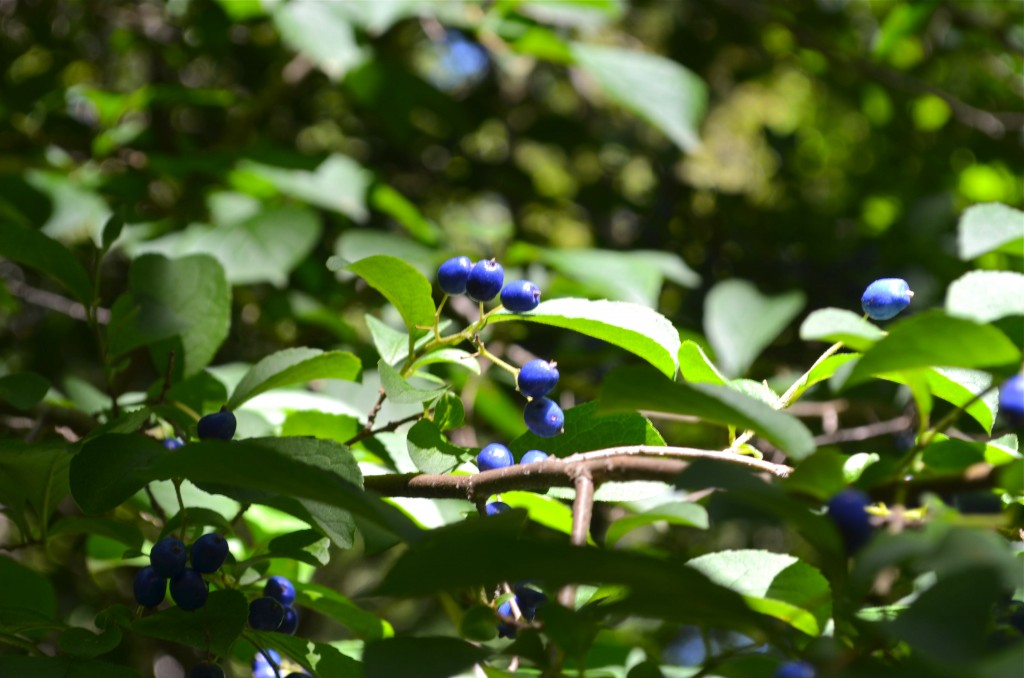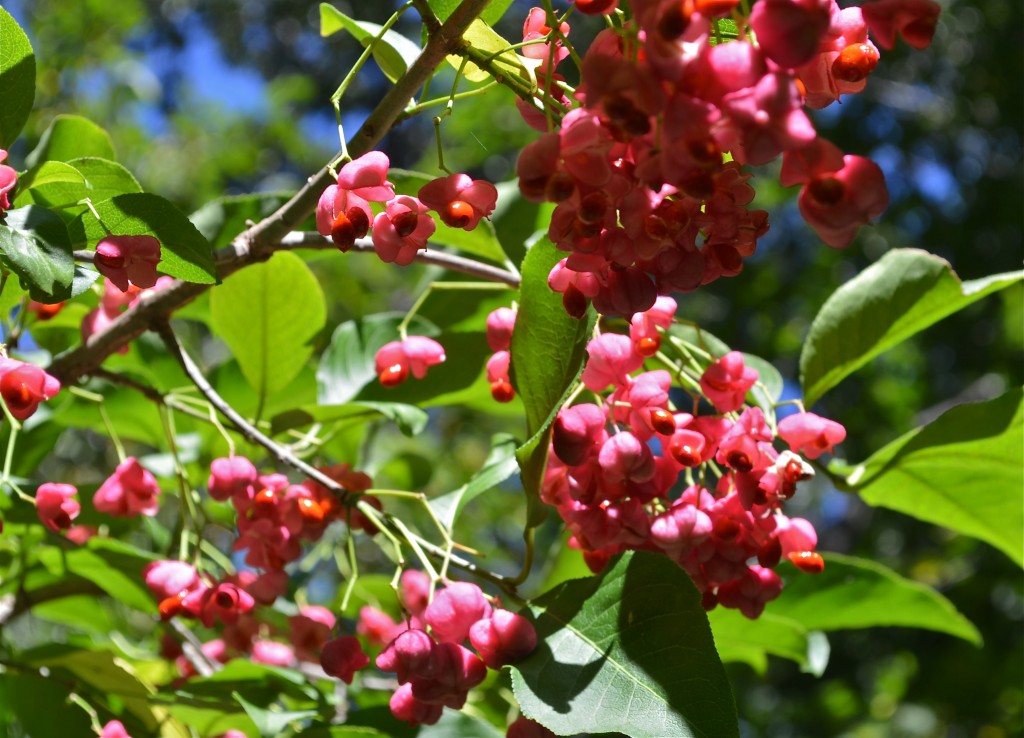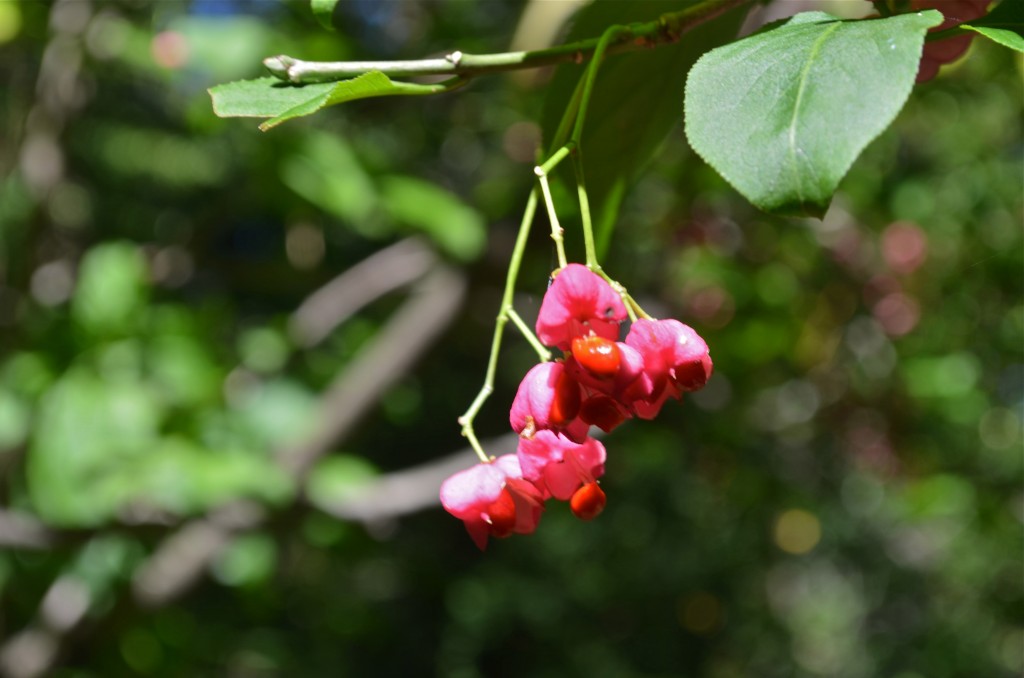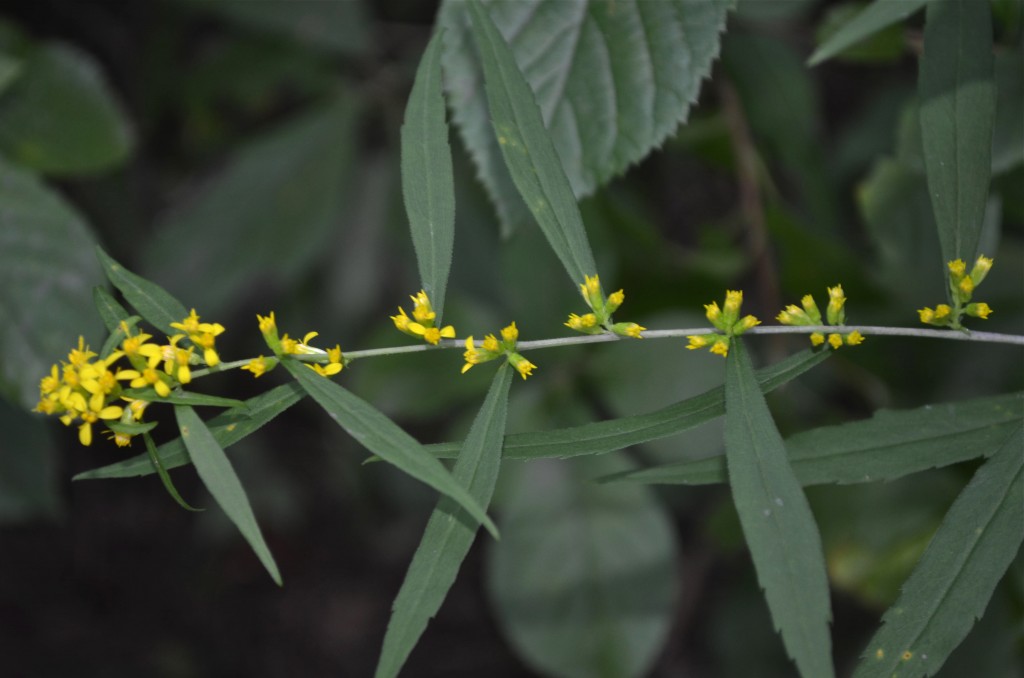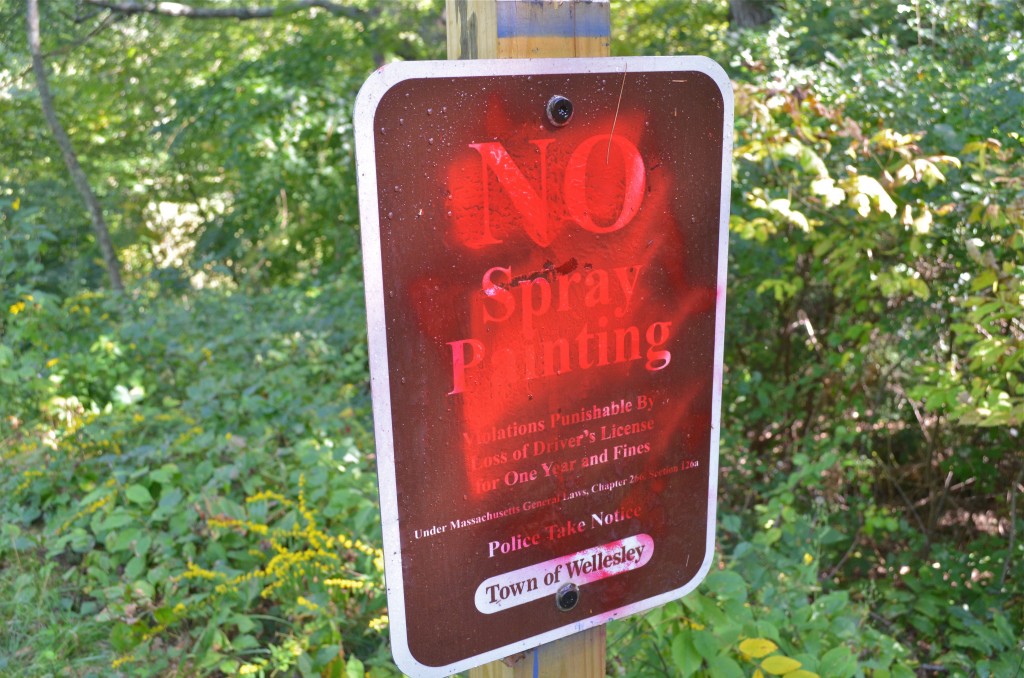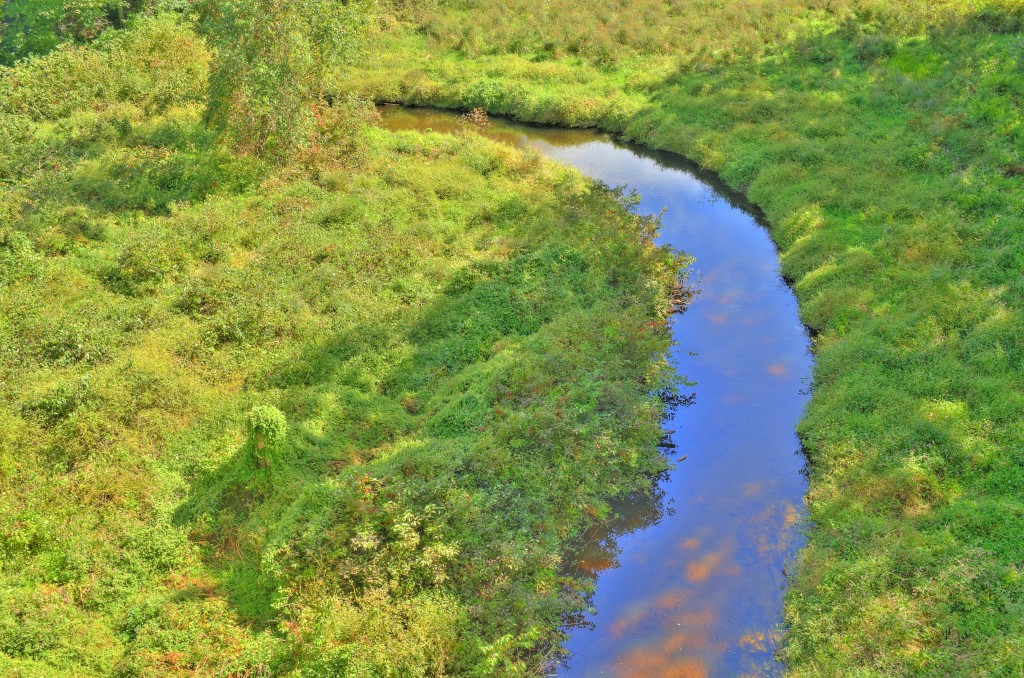These are tall and beautiful right now. The books say they have a bad fetid smell, but to me it just smells like a sweet floral — very nice today perfuming the air after rain. Up to 8 feet tall. A variety of bugbane. Has long been used medicinally to treat practically everything, and currently is popular for treating problems associated with menopause (but its actual effectiveness is uncertain). Native to eastern North America. Buttercup family.
Black Cohosh, Bugbane, Black Snakeroot, Fairy Candle (Cimicifuga racemosa)

